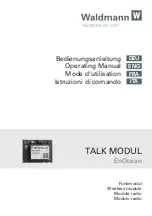
NINA-B4 series - System integration manual
UBX-19052230 - R06
Handling and soldering
Page 39 of 45
C1-Public
The module is compatible with the industrial reflow profile for RoHS solders. Use of "No Clean"
soldering paste is strongly recommended.
The reflow profile is dependent on the thermal mass of the entire populated PCB, heat transfer
efficiency of the oven, and the particular type of solder paste that is used. The optimal soldering
profile that is used must be trimmed for each case depending on the specific process and PCB layout.
Process parameter
Unit
Target
Pre-heat
Ramp up rate to T
SMIN
K/s
3
T
SMIN
°C
150
T
SMAX
°C
200
t
S
(from +25 °C)
s
150
t
S
(Pre-heat)
s
60 to 120
Peak
T
L
°C
217
t
L
(time above T
L
)
s
40 to 60
T
P
(absolute max)
°C
245
Cooling
Ramp-down from T
L
K/s
4
Allowed soldering cycles
-
1
Table 14: Recommended reflow profile
Figure 17: Reflow profile
☞
Lower value of T
P
and slower ramp down rate (2 – 3 °C/sec) is preferred.
☞
After reflow soldering, optical inspection of the modules is recommended to verify proper
alignment.
⚠
Target values in Table 11 should be taken as general guidelines for a Pb-free process. Refer to the
JEDEC J-STD-020C [9]standard for further information.
5.3.2
Cleaning
Cleaning the modules is not recommended. Residues underneath the modules cannot be easily
removed with a washing process.
•
Cleaning with water will lead to capillary effects where water is absorbed in the gap between the
baseboard and the module. The combination of residues of soldering flux and encapsulated water
leads to short circuits or resistor-like interconnections between neighboring pads. Water will also
damage the sticker and the ink-jet printed text.








































